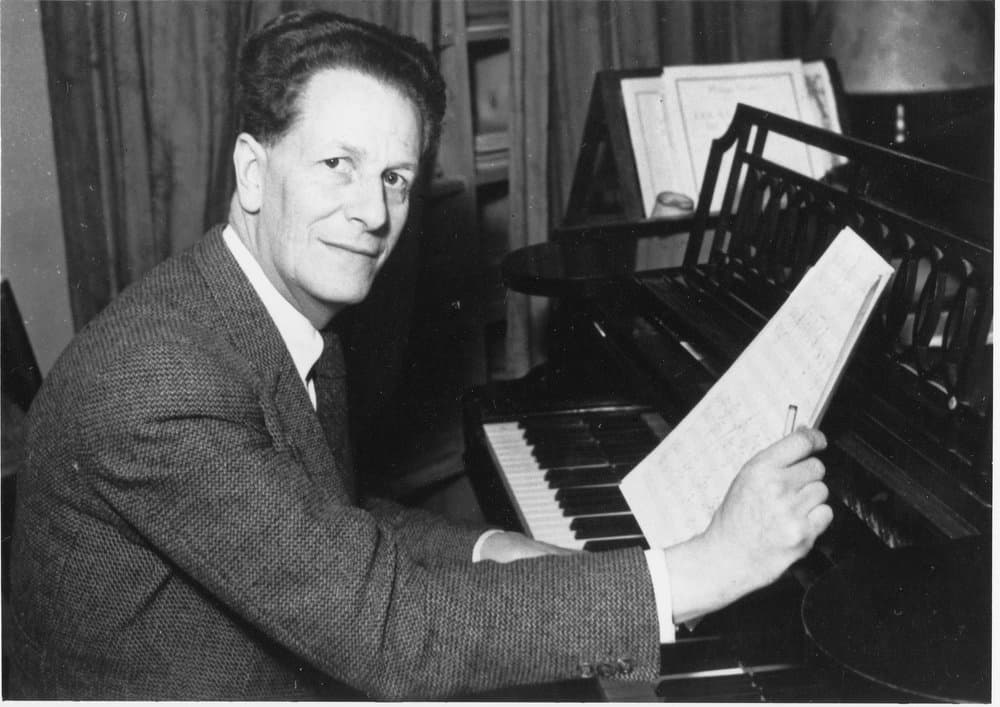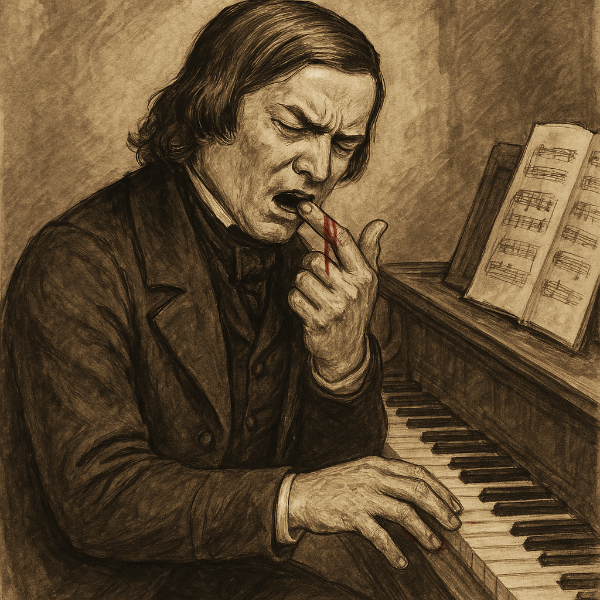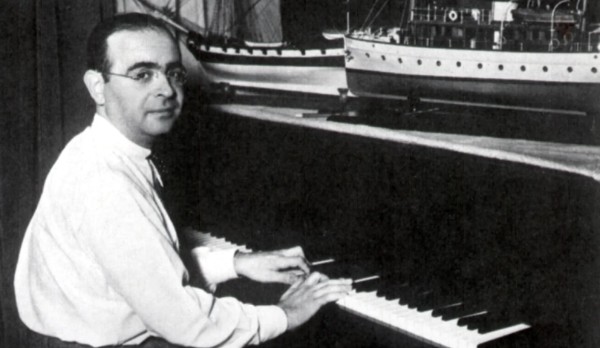Swiss composer Frank Martin (1890–1974) wrote across all genres but is known for his works for an unusual instrument. Where his 1944 work, Petite symphonie concertante, uses the instrument in conjunction with harp and piano, his 1951–1952 work, Concerto for harpsichord and small orchestra, takes the instrument and pits it against a small orchestra. The instrument in question is the harpsichord. However, this is not the harpsichord of the 17th and 18th centuries, which died and vanished in the 19th century, but the new revival harpsichord of the 20th century.

Frank Martin
The revival harpsichord, built on a metal frame like a piano, had to make acoustic adjustments to augment the sound. Where metal framing can muffle the harpsichord, more strings were added, in particular a set of strings that played an octave below normal pitch, known as the 16’ stop. The heavy-frame instruments were superseded in the mid-to-late 20th century by instruments that more closely followed the historical model, using thinner cases, more traditional use of strings, and, above all, no metal framing.
Frank Martin composed his first compositions at age 9 and started his musical education privately with Joseph Lauber at age 16, learning piano, harmony, composition, and instrumentation. When he attended the University of Geneva, starting in 1908, he studied mathematics and physics at the request of his father but only stayed 2 years in the course. In 1910, age 20, he joins the Association des Musiciens Suisse and remains affiliated with the group until his death. Starting in 1911, his works began to have public performances. In 1924, he moved to Paris where he met Émile Jaques-Dalcroze, the Swiss composer who developed Dalcroze eurythmics, which advocated learning musical concepts through music, and became a teacher in the technique.
Martin never attended a music conservatoire so his music, with the influences of his private teachers and of his own interests, made a composer outside the norm. He was commissioned by Paul Sacher for a work in 1944 and so composed the Petite symphonie concertante, which was given its premiere in Zurich in 1946. This neoclassical work for harp, harpsichord, piano, and string orchestra combines both French and German compositional techniques. The harpsichord used here was not the frail harpsichord of the 19th century, but the robust ‘revival’ harpsichord that was modeled on the piano.
The Pleyel harpsichord, shown below, was built in the 1930s and looks like a piano with two keyboards. Even the internal frame is made of metal like a piano. This was the kind of harpsichord used by Wanda Landowska (1879–1959) starting in the 1930s with her revival of Bach’s harpsichord music. Note the number of pedals (7) on this harpsichord: they were used for changing registers.

Pleyel Revival Harpsichord, 1930s (Photo by Christopher D. Lewis)
Martin’s use of the new revival harpsichord was his opportunity to write new music for an old instrument, now made loud by the use of piano technology. By creating the work for small orchestra, he gave the harpsichord a chance to stand on its own.
Frank Martin: Harpsichord Concerto (Christiane Jaccottet, harpsichord; Lausanne Chamber Orchestra; Frank Martin, cond.)
There’s a delicacy to the work but it’s definitely not Bach that we’re hearing. Martin used his own version of 12-tone technique – for example, in the Petite symphonie concertante, Op. 54, he presents the 12-tone row in the opening of the first movement, it gets transposed, but is never used in its other forms (inversion, retrograde or retrograde-inversion) as Schoenberg and his followers did. One of Martin’s techniques was to use the row as an accompaniment ostinato. Martin’s personal style was very chromatic, but always in line with tonality, albeit an enlarged tonality. His music has a lyricism often lost in modern composition.
Martin was himself a harpsichordist and founded the Société de Musique de Chambre de Genève (Chamber Music Society of Geneva) in 1926, which he would conduct from the piano or harpsichord keyboard until 1936. The Harpsichord Concerto was commissioned by Swiss harpsichordist Isabelle Nef, who had been a student of Landoswka’s in Paris.
For more of the best in classical music, sign up for our E-Newsletter



